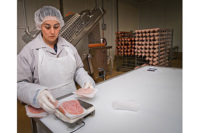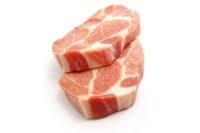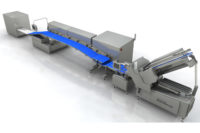Product Focus | Slicing & Portion Control
Increasing yield with slicing

The benefits of portion control slicing equipment are numerous for smaller processors.
Consumers like uniform thickness, size and shape of products, and for retail or foodservice this uniformity helps to ensure that consumers and customers are getting consistent amounts of product.
“Improved slicing also improves the appearance of some products and reduces down-graded slices and waste,” says Lynn Knipe, extension processed meat specialist and associate professor in Food Science and Technology and Animal Sciences at the Ohio State University in Columbus.
Edward Hall, partner at Lone Star Meats in Austin, Texas, agrees the benefits of portion control slicing include increased yields, increased productivity and the ability to offer surge capacity without increased overtime.
“The advancements we have seen in equipment for slicing and portion control have given us the ability to cut various boneless muscles including thin meats,” he says. “We have also seen great improvement in the communication between the grader slicer and operator to make smart decisions which increase yields. With advancements, we also utilize a smaller footprint in the production room.”
A number of new types of slicing blades have been designed for different products, such as blades with different profiles, honing angles, coatings, serrated edges, as well as spiral (involute) blades, and blades designed for poultry.
“To determine the right blade for the type of product and the intended use of your sliced product, request that a blade manufacturer allow you to try a variety of different blades on your slicer to select the best blade for your application,” Knipe says.
Additionally, automation with slicers is not such a new concept for large, high-speed slicing operations, but availability of smaller automatic slicers with conveyor belts has increased. Still, cost of the equipment that allows processors to take advantage of the latest technology may be the greatest challenge processors face.
“The biggest challenges we see with this equipment are the upfront capital investment, the training of operators to fully understand the capabilities of the slicer and utilize those capabilities with increased yields,” Hall adds. “We are also seeing a quicker return on investment, and as technology improves a lower cost to entry.”
Understanding the technology behind maximizing sliceability of meat products also may be challenging some processors. “Factors that affect meat sliceability, include product temperature, moisture and fat content, and product texture,” Knipe explains. “Each slicer has an optimal temperature for slicing different products. Additionally, crust freezing some products may improve sliceability.”
The texture of the product also may be affected by the quality of the initial raw materials, processing methods and non-meat ingredients used, Knipe says. “Firmness can be improved by adding proper levels of salt, sodium phosphate, and other ingredients which improve water and protein bind,” he explains.
Knipe expects that the technology that is being used in slicers for larger companies will be soon made available on smaller scales for smaller processors. In turn, he anticipates growth in the automation of slicing for smaller processors.
As skilled labor becomes harder to find and more expensive on a per hour basis, Hall also believes automation will continue to grow.
“The next big development I see is with bone-in products utilizing automated band saws,” he says. IP
Looking for a reprint of this article?
From high-res PDFs to custom plaques, order your copy today!









